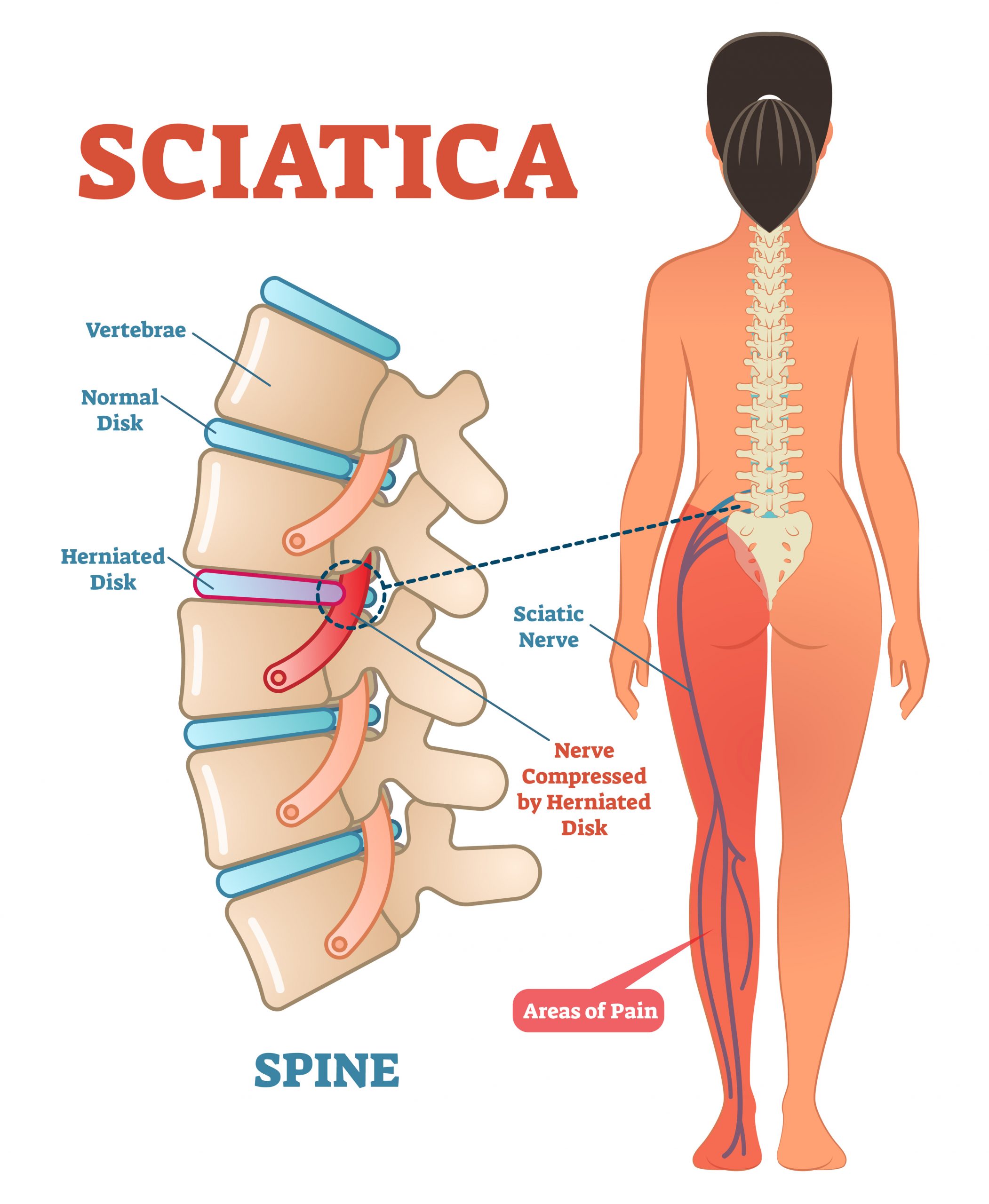Let’s Talk about Sciatica
What is sciatica?
Sciatica is more of a description than a specific diagnosis. Irritation that has various causes produces pain along the sciatic nerve that runs from the lower back into the buttock and can even go all the way into the foot. Usually, but not always, sciatic happens on one side at a time. Symptoms can be quite variable, most know sciatica as severe pain to the back of the leg but there can also be pins and needles or numbness, burning and not always all the way to the foot for it to be sciatica.
How do we treat sciatica?
Treatment of sciatica is most frequently by conservative hands-on therapy. We see very good results with Chiropractic treatment of sciatica at The Guildford Spine Centre. Often the first step is to correctly diagnose sciatica and rule out any serious underlying issues that may need investigation. Once this has been done and the level of the nerve that is irritated has been done through clinical examination conservative treatment can begin. This will start more gentle as often patients are in a lot of pain initially and will be tailored to each patient. We aim to help improve pain levels first whilst also increasing patient mobility and their ability to complete day to day tasks. We know getting back to work and exercise is positive for the patient but also studies show the faster we can do this, within reason, the better the prognosis for recovery.
Surgical treatment of sciatica
Surgery is an option for patients with sciatic pain. Often this is reserved for only patients who are in extreme pain, have certain ‘red flag’ or urgent symptoms or who have not responded to hands-on therapy like Chiropractic treatment. Studies show that at one year post surgery and 1 year post conservative treatment patients experience an almost identical improvement in symptoms. If undergoing conservative care this eliminates the risks associated with surgery but gives just as good an outcome. Should surgery be required a lumbar discectomy is the procedure most commonly performed where part of the lumbar disc is cut away to relieve pressure on the nerve.
Exercise for sciatica
If these preventative measures fail, there are several exercises that can be done to ease symptoms of sciatica, such as using a foam roller to massage the glute area and a variety of yoga poses aimed at opening the hip flexor and stretching the outer hamstring, lower back and glute. Often specific low back extension exercises that target nerve irritation are beneficial and given dependant on the presenting patients symptoms, history and clinical presentation.
How do we prevent sciatica?
There are many preventative measures which can be taken into consideration, such as leading a healthy lifestyle, sleeping on a supportive mattress, maintaining good posture and regular exercise. Don’t forget that regular Chiropractic adjustments will also help keep you feeling good and moving which will prevent future episodes of sciatica.
Test your Chiropractic skills
Case
25 year old lady comes in with 3 days of pain in her left buttock and hamstring after doing a heavy deadlift in the gym. She has been struggling to sleep and ibuprofen and paracetamol are not helping much. She gets pain on coughing and struggles with pain when trying to put her shoes on in the morning.
What is the most likely diagnosis and why?
- Hamstring pull/tear
- Sacro-iliac joint strain
- Lumbar disc tear with nerve irritation causing sciatica
Answer: it could actually be any of these issues. The pain on coughing or sneezing is very common with a lumbar disc issue but a proper examination will be needed to confirm this.






Leave A Comment